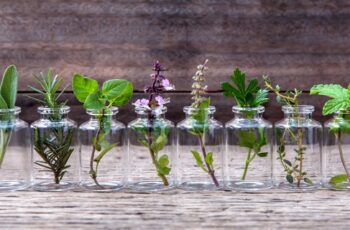Ad Blocker Detected
Our website is made possible by displaying online advertisements to our visitors. Please consider supporting us by disabling your ad blocker.
One of the biggest and most underrated keys to a fast-working compost pile is to chop the ingredients before tossing them in.
As a rule, the smaller the item going in, the quicker it decomposes. The more finely a material is cut up, the more surface area it has exposed to break down. And as the surface area comes into contact with bacteria and organisms at a higher rate, it breaks down more quickly.
But don’t think you need to run out and purchase a fancy shredder. If you have one, by all means, use it. But you can also use your push or riding mower to easily shred ingredients if needed. And as you are saving those kitchen scraps, just be sure to give them a few more chops before tossing them into the pile.
#4) Turn That Pile!
Just as chopping your ingredients up will speed up decomposition, so will turning your pile often. Like all living creatures, the organisms that help to break down a compost pile need oxygen.
Turning your pile frequently (with a spade or pitchfork) helps to add oxygen to the center core where it is needed most. A compost pile’s hottest area will always be the center. And because of that, it burns through oxygen quickly.
But by turning and mixing your pile at least once or twice a week, you resupply oxygen to the core. In addition, the brown and green materials become mixed more thoroughly as well, helping to speed decomposition even faster.
Turning a pile at least a few times a week will speed up the decomposition process greatly. But ideally, if you can turn your pile once a day, you will achieve maximum efficiency. It is just one more reason keeping your pile close to where you work (or near the garden) is always a great idea. The old saying out of sight out of mind certainly applies to compost piles!
#5) Keep The Pile Moist
In addition to oxygen, compost needs water to keep it cooking as well. And that is why having moisture present in your pile is a must. The moisture and oxygen work together to create the hot temperatures needed to break it all down quickly.
Keep your pile moist by adding water if it begins to dry out. A good compost pile should feel like a well-wrung, slightly damp sponge. If you live in areas with extreme heat or a lot of rain, covering your pile might be a good idea.
It not only helps keeps moisture and heat in but can keep soaking rains from deluging it. As much as a dry pile can slow decomposition, a water-logged pile can stop it in its tracks too. You can cover with a tarp or roof, or make a swinging lid if needed.
#6 What Not To Put In Your Compost Pile
Finally, it is also extremely important to know what not to put in your pile. Meat is a big no-no. It attracts rats, mice, raccoons, and other unwanted animals. Even worse, it can lead to foul-smelling piles that are anything but pleasing.
In addition, always refrain from using dog or cat manure as it can contaminate your pile, as well as the plants and vegetables you use the compost on. Here is to creating and making the perfect compost pile in your backyard this year! Happy Gardening – Jim and Mary.
Source: https://oldworldgardenfarms.com/

